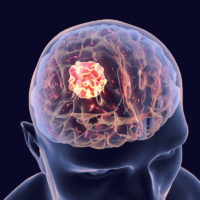Appeal Courts Finds No Evidence for Toxic Exposure from World Trade Center Site

In a recent opinion, the First Department (Manhattan) of the New York Appellate Division clarified that mere speculation cannot support a finding of causation for an exposure-related “new onset disease” under New York’s Retirement and Social Security Law. The case involves toxic exposure and the World Trade Center site, where 9/11 happened. Learn more about the case below, and speak with a seasoned New York toxic exposure attorney for more information.
Toxic Exposure Claim from World Trade Center
The recent opinion was issued in the case titled In re Hayden v. Bratton. The petitioner, Gerard Hayden, claimed that toxic substances to which he had been exposed while working on the World Trade Center site had resulted in him developing an acoustic neuroma. An acoustic neuroma, also known as a vestibular schwannoma, is a type of tumor that develops on the vestibular nerve connecting the inner ear to the brain. These tumors can affect hearing and balance, and, in rare cases, can become life-threatening by placing pressure on the brain stem.
Hayden filed a petition for accidental disability retirement based on this condition, arguing that it should be considered a new onset disease under the New York Retirement and Social Security Law. The law allows for compensation of disability claims for otherwise-unnamed “new onset diseases resulting from exposure as such diseases occur in the future including cancer, asbestos-related disease, heavy metal poisoning, and musculoskeletal disease.” Hayden’s claim was rejected by the City of New York, and he appealed the decision.
Reasons for Denial of Toxic Claim
The Appellate Division agreed with the City’s determination denying the application for disability benefits. When an individual who worked in World Trade Center rescue, recovery or cleanup develops a condition identified as a “qualifying condition or impairment of health,” the Retirement and Social Security law provides for a presumption that the condition was caused by work done on the World Trade Center. However, when the disabling condition is based on an exposure-related new onset disease, this presumption no longer applies. In the 2017 case titled Matter of Stavropoulos v. Bratton, the First Department wrote in its opinion that “an applicant asserting for the first time that a disease should be recognized as a new onset disease has the burden to submit evidence showing that the disease has been linked to exposure to [World Trade Center] toxins and therefore qualifies as a new onset disease.”
Only one of Hayden’s physicians—his neuro-oncologist—testified regarding the cause of his patient’s condition. The doctor explained, “It is possible that . . . exposure may have contributed to pathogenesis.” Hayden presented no additional evidence, such as expert testimony or scientific studies, linking the development of acoustic neuroma to toxins found on the World Trade Center site. The First Department wrote that the testifying physician’s use of “’possible’ and ‘may’ consists of speculation, which, absent explanation or supporting medical, epidemiological, or other evidence, does not satisfy the evidentiary standard for previously unrecognized ‘new onset diseases’.”
For knowledgeable and experienced assistance with claims of toxic exposure in New York, contact the Islip offices of Richard A. Fogel at 516-721-7161.
